How to Increase Your Affiliate Income via Email Marketing
Affiliate marketing is a huge and consistently growing business. In 2017, Statista estimated that the total spending through affiliate marketing in the U.S. reached $5.37 billion. This year, the projected figure is $6.82 billion, and by 2024 it is estimated that affiliate marketing spend will reach $8.2 billion and you can get your fair share with these high-paying affiliate programs.
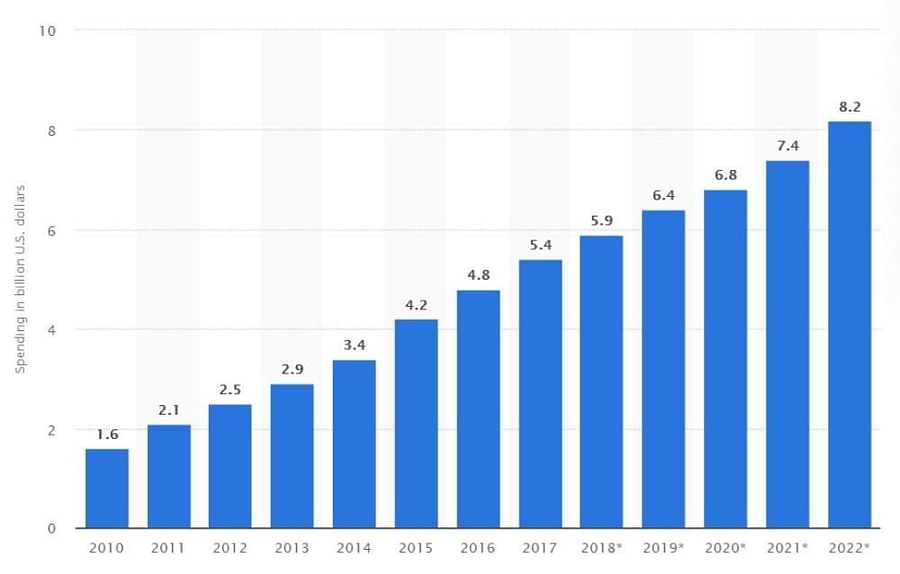
Considering these figures, and the rise in e-commerce sales in many industries due to the COVID-19 pandemic, there has never been a better time to get into affiliate marketing. But before you go all-in with it, there are some things you need to consider.
Getting started in affiliate marketing is as simple as joining a program and putting an affiliate link on your site. However, while getting into affiliate marketing is easy, making it work for you is harder. As the affiliate marketing sector grows, your competition grows too. You might be competing with other sites that have more visitors, and those visitors translate into more clicks and higher revenue.
This means that your affiliate content has to stand out from the rest in order to draw visitors to your site and get them to click on your affiliate links. In this article, I’ll discuss three ways to increase your affiliate marketing income by selling through your email list.
Table of Contents
Fuel the excitement with Email Sequences
Email marketing is one of the best ways to promote affiliate deals. According to one study it’s the fourth highest source of traffic for affiliate marketers. Yet while it might lag behind other channels in terms of volume, the quality of a lead from your email list is far higher than a random visitor passing through your blog.
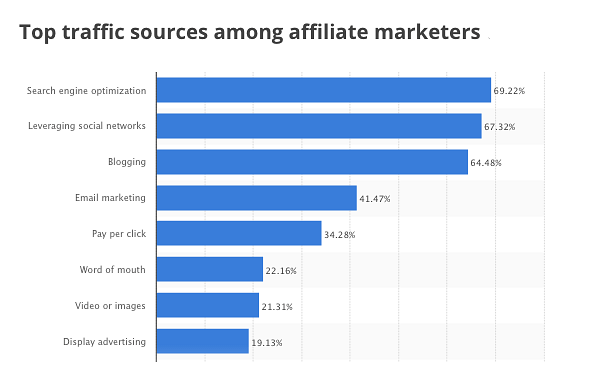
Oberlo, a popular Shopify plugin, claims that for every $1 you spend on email marketing, you can expect an average return of $42. Savvy affiliate marketers say that every subscriber on your list is worth $1 a month to your business.
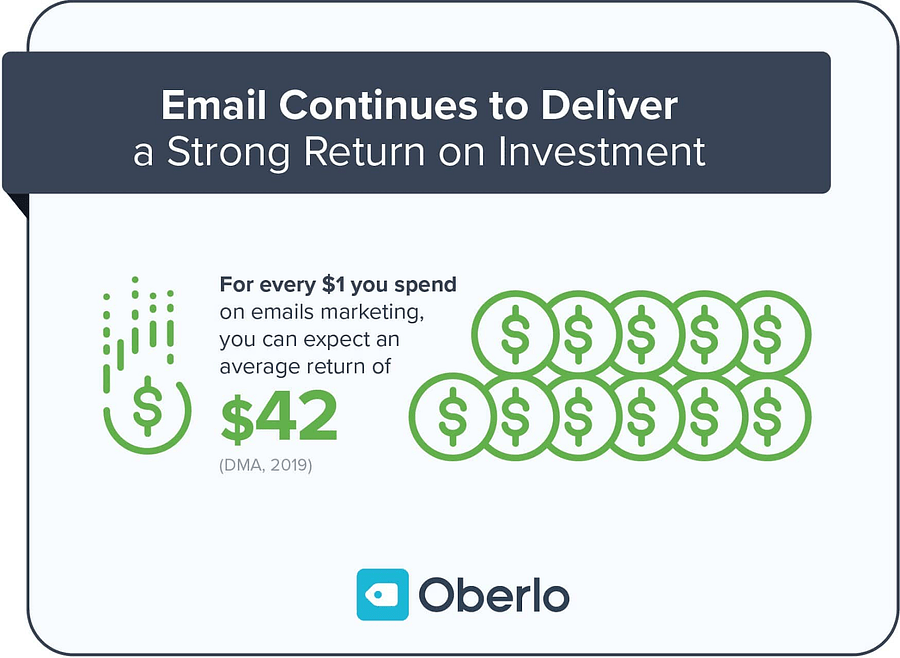
So, there’s a clear case for using email as a source of affiliate marketing revenue. But how do you do it well?
It’s not as simple as buying a list of email addresses and spamming them with promotional emails everyday. This is unethical as well as a waste of time and money. You should collect your leads ethically and use email verification tools like Voila Norbert to clean your list. Then, you need to develop a relationship with your potential customer.
Luckily, automating your email sequences will help you get those extra clicks. Here is a typical email sequence that I’ve used many times before, with proven results.
Welcome/Thank you Emails
This is where you thank your new lead for subscribing or signing up to receive your newsletter. Your first email is crucial because it is your opportunity to make the new subscriber feel valued.
The following should all be included in your welcome email:
- A “thank you” for signing up
- A link to a bonus for new subscribers, if you offer one
- What to expect from you in terms of frequency and type of content
- A brief introduction to you and your site or business
- Instructions for whitelisting your email address
- Contact information and links to your social media channels
Your welcome email defines how your audience will treat future emails from you, so make sure you get it right. The watchwords are friendly and engaging.
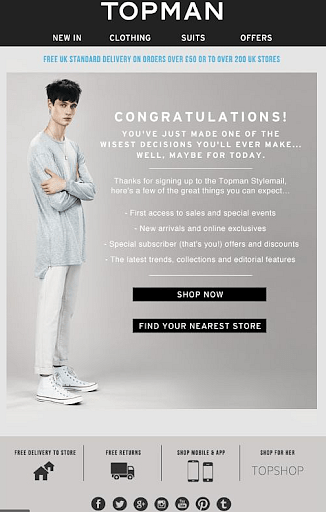
Above is a great example from British men’s clothing brand, Topman.
Content Emails
These are short emails that contain tips, advice or other content that is directly relevant to your audience. You can also share links to articles on your affiliate website. Occasionally sharing other people’s content, such as videos or blog posts, is also a good idea if they are relevant.
Here’s a great example of a content email I received this week from a newsletter aimed at professional writers.
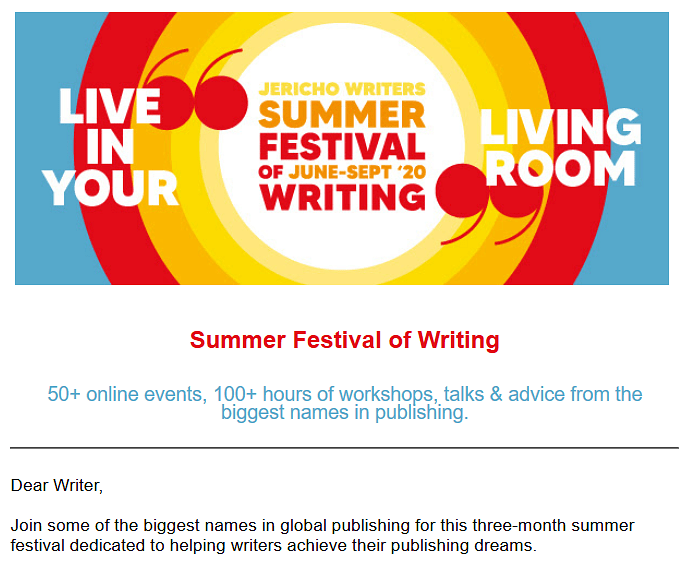
Notice how they use an eye-catching graphic, an enticing headline, and a call to action in the opening sentence of the main copy. There are already a few top notch themes for affiliate marketing. You can explore them if you follow affiliate marketing trends.
Relationship Building Emails
These emails remind your subscribers that there’s a human running the show behind the scenes. Whether it’s a video or a blog entry, your goal here is to build a relationship with the subscriber that goes beyond selling products. How much of your life “behind the scenes” you want to reveal is up to you, but showing that you’re a real person who cares about your readers builds loyalty and customer retention.
These emails are also a great time to invite your subscribers to connect with you on Facebook, Twitter, or LinkedIn for more useful content.
Promotional/Sales Email
You should send promotional emails only after you feel you’ve developed a strong enough bond with your subscribers. Whether you’re introducing a new product, offering a discount on certain items, or highlighting a fantastic deal, your copy shouldn’t read like a hard sell.
A good promotional email can be as simple as informing your audience that you have new items up on your site now, and if they use a specific code they can enjoy a discount or free shipping. This is a good example from beauty brand NK.

So your email sequence should look something like this:
- Welcome email
- Content email
- Relationship email
- Promotional email
- Content email
- Relationship email
- Promotional email
And so on. You don’t even have to send an email everyday - in fact, you shouldn’t.
Create A Promotional Email Sequence
When you decide to support an affiliate offer you need to go all in. To maximize your sales, one email is not going to be enough. Instead, you should send an email sequence to your list. I recommend you send an email sequence of between 3-5 emails spaced over one week.
At a minimum, send three emails. Below are my suggested timings:
- Send on the first day of the promotion. Outline the offer, and why it’s relevant
- The second email should be sent on the penultimate day of your promotion. Take a different approach to the first email. For example, you might answer Frequently Asked Questions
- Final email to be sent on the closing day of the offer. Emphasize that some element of the offer is time sensitive and they need to be quick to avoid missing out
Using the sequence suggested above, you’re all set to start an email campaign for your affiliate site. In the next section we’ll look at how to create a sense of urgency to your offer.
Raise the Urgency With Countdown Timers
Ever wonder why the Black Friday and Cyber Monday shopping days are so wildly successful every year? The secret is the low prices combined with the sense of urgency created by the fact that most of these sales last only a day, or a weekend at the most.
When there is no urgency, people take longer to make up their minds about buying. This applies regardless of how big the discount is. But when a deal is only available for a short time, there’s a sudden rush to purchase. This is created by the simple psychology of FOMO - Fear of Missing Out.
This ad from clothing brand Charlotte Russe plays very explicitly on this fear:
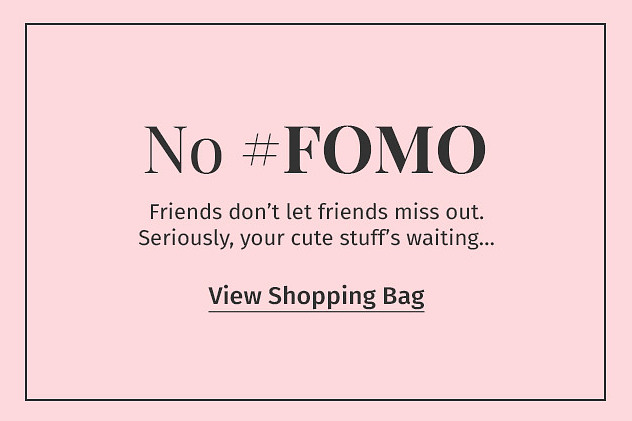
Countdown timers use the same principle as Black Friday and Cyber Monday sales. When you can see the hours, minutes and seconds ticking away, you just have to buy it or else it may be a long time before you see that deal again.
You can use an email template builder to add a countdown timer to your email sequences. A study by Adestra found that an email with a countdown timer received a 400% increase in CTR.
Sweeten the Deal With Bonuses
Bonuses belong in every affiliate marketer’s toolbox. Offering a bonus along with the product you’re promoting helps convince the customer to click on “buy”. Here’s why bonuses work:
- They create a sense of urgency: Just like countdown timers, bonuses play on the customer’s Fear of Missing Out to persuade them to buy. Nobody wants to pass up a great deal! Limited-time bonuses are very useful in ramping up your sales numbers.
- They add value: Have you ever been in a situation when you were considering a purchase, but felt you wouldn’t be getting your money’s worth? Adding a bonus to your main promotion will make your prospects think they’re getting more bang for the buck.
- They remove objections: There will always be people who have objections about your product, but a bonus can lower their guard enough to get them to try it.
- They help you become the affiliate of choice: It’s highly likely you’re not the only marketer promoting a specific product. However, adding a bonus enhances the original offering and sets you apart from your competitors. When those people want to buy a product in the future, they’ll go to your site because of the bonuses.
Your bonuses should be directly relevant to your audience and the product you’re promoting. This means understanding their pain points and goals. The best way to do this is to build a customer persona, which outlines your typical customer’s age, gender, interests, and concerns. It should answer the question “What problems does the customer have that my product can solve?”
Once you know the answer to this question, you can offer a compelling bonus. If you’re working in the knowledge industries, you might offer access to white papers, exclusive webinars, or free software. Or if you’re selling skincare products, you could offer a free sample of a new lotion.
I’ve found that email marketing is the best way to promote these bonuses. I use email sequences to reach out to my prospective affiliate customers, combining these with countdown timers for maximum impact.
Check out the below example of an email promoting an affiliate product using both urgency and bonuses to drive conversions:
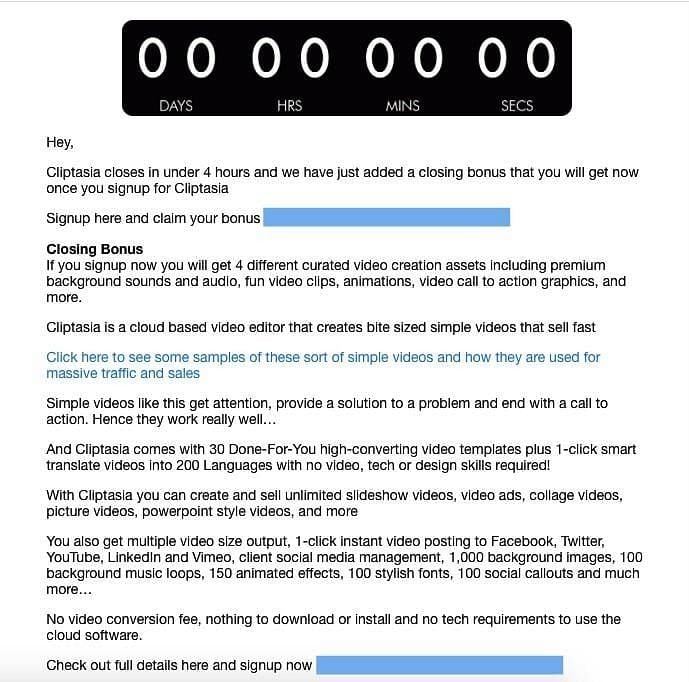
You should provide your bonus through a landing page. You then link from the landing page to the sales page of the product you’re supporting through a buy button. This formula where you sell your bonuses before the product will help you generate more affiliate sales.
You do not necessarily need to stop at just one bonus. Stacking bonuses has been proven to be highly effective in improving sales. When you offer multiple items as part of a bonus - and give a hypothetical value for the free items - your sales will only increase.
Conclusion
Affiliate marketing is in many ways similar to other types of online marketing. You don’t have to do anything radically different to be a successful affiliate marketer. If you promote quality products to the right audience, the demand will drive sales. But in order to really benefit from this, you need to grow your traffic and ensure that your audience are buying through your links.
Remember your three most important tools:
- Email sequences. Email marketing is proven to be an effective way of driving affiliate sales. While establishing trust through email marketing takes time and effort, using email sequences will help build that trust and turn you into a preferred affiliate.
- Countdown timers. These use the concept of scarcity and play on the customer’s Fear of Missing Out to spur them to make a purchase. They have to buy now; otherwise, they risk not seeing the deal again for a long time.
- Bonuses. These add value to the product that you’re promoting. They help convince the prospect that they’re getting more for their money. When a bonus fills a customer’s need, they are nearly impossible to resist.
I hope that the tips above have given you ideas for promoting your affiliate site. By using all three methods separately or combined, you can boost your affiliate income and become your customers’ preferred affiliate site.
Now that you know what you can do, it’s time to set these ideas into action. If you follow all the steps and persevere, there’s no reason a slice of that projected $6.8 billion in affiliate revenue shouldn’t be yours!
FAQs
1) What are the important tools to increase my affiliate income via email marketing?
The 3 most important tools to increase your affiliate income via email marketing are Email sequences, Countdown timers, and Bonus deal offers. Also, to boost your affiliate marketing efforts, you can use some recommended autoresponders for affiliate marketing
2) How should an email sequence ideally look like in email marketing?
Your email sequence should ideally look something like this:
- Welcome email
- Content email
- Relationship email
- Promotional email
3) How do countdown timer deals work in email marketing?
The secret is the low prices combined with the sense of urgency created by the fact that most of these sales last only a day, or a weekend at the most.
When there is no urgency, people take longer to make up their minds about buying. This applies regardless of how big the discount is. But when a deal is only available for a short time, there’s a sudden rush to purchase. This is created by the simple psychology of FOMO - Fear of Missing Out.
4) Why do bonuses work in email marketing?
Bonuses work in email marketing because they create a sense of urgency, add value, remove objections, and help you become the affiliate of choice.
5) How can I offer a compelling bonus in email marketing?
For a bonus to be compelling, it should answer the question “What problems does the customer have that my product can solve?” Once you know the answer to this question, you can offer a compelling bonus. If you’re working in the knowledge industries, you might offer access to white papers, exclusive webinars, or free software.

